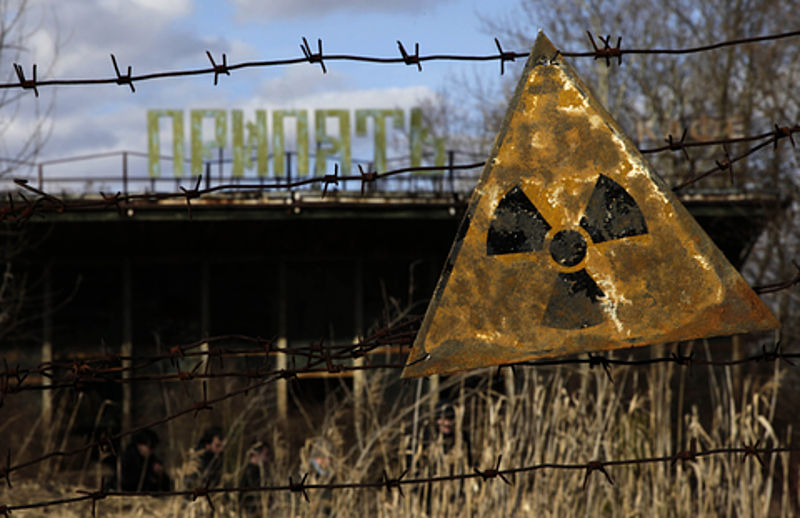
A team from The University of Nottingham have been collecting samples from the Chernobyl Exclusion Zone to investigate the long term behaviour of radioactive isotopes in soils.
Thirty years after the catastrophic nuclear disaster on 26 April 1986, at the Chernobyl Nuclear Power Plant in the town of Pripyat in Ukraine, experts from the School of Biosciences have been collecting samples to verify the results of laboratory measurements being made back home in the School of Biosciences on the University’s Sutton Bonington campus.
Readily absorbed radioactivity 'can contaminate agriculture'
George Shaw, Professor of Environmental Science, said: "The radioactive isotope which received most attention after the emergency phase of the Chernobyl accident was caesium-137.
"This has a 30-year half-life and is readily absorbed by plants and animals, so can contaminate our agriculture and food supply.
"It can still be measured in soils across Europe but its impact has diminished significantly over the last 30 years."
This research - ‘Biogeochemical processes and radionuclide behaviour in soil-plant systems' - is part of a broader study being conducted into the long-term environmental impacts of the Chernobyl accident.
The ‘TREE’ project is examining the transfer, exposure and effects of long-term radioactive contamination from Chernobyl, with the aim of integrating the science needed to underpin assessments of environmental radioactivity effects on humans and wildlife.
The TREE project is led by Brenda Howard MBE, who is based at the Centre for Ecology and Hydrology, is also an Honorary Professor in the School of Biosciences at Nottingham.
The University of Nottingham team visited the site last year. The main precautions were to avoid contamination of skin and clothes while working in the field and to minimise any inhalation of dust by wearing face masks during sampling.
External exposures are monitored by personal dosimeters worn at all times in the field; these doses are minimised by continuously monitoring the ambient radiation dose at each field site and spending as little time as possible in sites with higher dose rates.
The team also had expert local guidance from Dr Sergey Gaschak of the Chernobyl Centre for Nuclear Safety, Radioactive Waste and Radioecology.
Close to the Chernobyl Power Plant, where much higher levels of radioactivity still persist, numerous other radioactive isotopes can be found, some with extremely long half-lives.
The research at Nottingham is focussing on some of these, including technetium-99 (half-life 210,000 years), iodine-129 (half-life 16 million years) and uranium-238 (half-life 4.5 billion years).
The aim of this research is to develop predictive computer models for these radioisotopes which can be tested using data from analysis of samples taken from the most highly contaminated parts of the Chernobyl Exclusion Zone.
The Exclusion Zone surrounding Chernobyl, which has remained largely unpopulated by people, can be seen as a unique outdoor laboratory in which the long-term behaviour and effects of large-scale radioactive contamination can be studied.
'Long-lived radioactive waste'
Professor Shaw said: "Our current understanding is hampered by a lack of measurements on the long-term behaviour of radioisotopes under natural conditions.
"The results of our studies will help us understand the implications of disposing of long-lived radioactive wastes underground."
Studies conducted by the TREE project will also contribute to the development of policy which regulates radiation exposure and protects both humans and wildlife from radioactive contamination of our environment.
Furthermore, the university are training a cohort of post-doctoral researchers and PhD students who took part in a summer school in the Chernobyl area in September 2015. These will be the UK’s environmental radioactivity experts of the future.
The Chernobyl accident was the most catastrophic nuclear accident in history. The university are striving to learn valuable scientific lessons from its far-reaching impact which can be used to protect ourselves and our environment in the future.
Nottingham’s major experimental contribution to the TREE project is due to end in 2017 when the results will be published. The TREE project itself is due to run until 2018, when the full results from the consortium will be reported.
